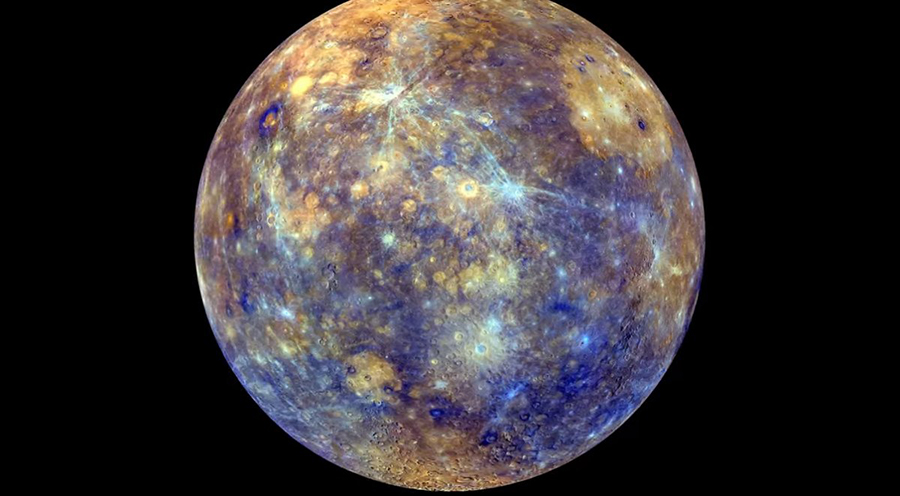Since the planet Mercury, it’s the closest to orbit around the Sun, studying the planet has become a difficult task to achieve for astronomers. Now, thanks to the NASA’s spacecraft Messenger researchers have been provided with significant data in order to further study the surface of Mercury.
A team of researchers at Johns Hopkins University Applied Physics Laboratory was able to confirm the reasons why the planet shows an unusual dark-colored surface. The researchers responsible for analyzing the data, led by Patrick Peplowski claim that the planet’s color is due a carbon residue from Mercury’s ancient surface.

Additionally, the study capable of determining the factors that made the planet present those unusual colors is featured in the journal Nature Geoscience and was funded by NASA.
According to the data provided by the Messenger spacecraft, the carbon could be transported to the planet’s surface through impact craters left after massive objects smashed into Mercury. Researchers affirmed that Mercury’s surface is estimated to contain “weight-percent levels of carbon, likely in the form of graphite.”
Mercury’s mysteries exposed
It’s worth remembering that NASA had not visited Mercury since the Mariner 10 spacecraft orbited the planet in 1974. On that instance almost 30 years later, the spacecraft was able to observe nearly half of the planet before crashing down in Mercury, thus ending any further transmission from the Mariner 10. The surface of the closest planet to the sun is strangely similar to the Earth’s moon as it shows deep and scattered holes along the planet’s exterior.
The holes on the moon are called impact craters, and it would be suitable for Mercury’s holes to be called the same, as it is probable the reasons for craters shown in the planet exterior are comparable to the Moon’s craters.
In addition, Mercury also resembles the Moon on the count of having a complete range of phases while it rotates around the Sun’s orbit from an Earth’s perspective. Very much like the moon phases according to the Sun’s position regarding a particular location on Earth.
The evidence supporting this hypothesis came from NASA’s spacecraft Messenger that spent 4 years since it was launched on 2011 surveying Mercury’s surface. Researchers accredited Mercury’s unusual dark-colored surface to the cooling of hot magma that covered most of the planet’s surface, leaving carbon to form from the crust that lies underneath.
Source: The Verge
